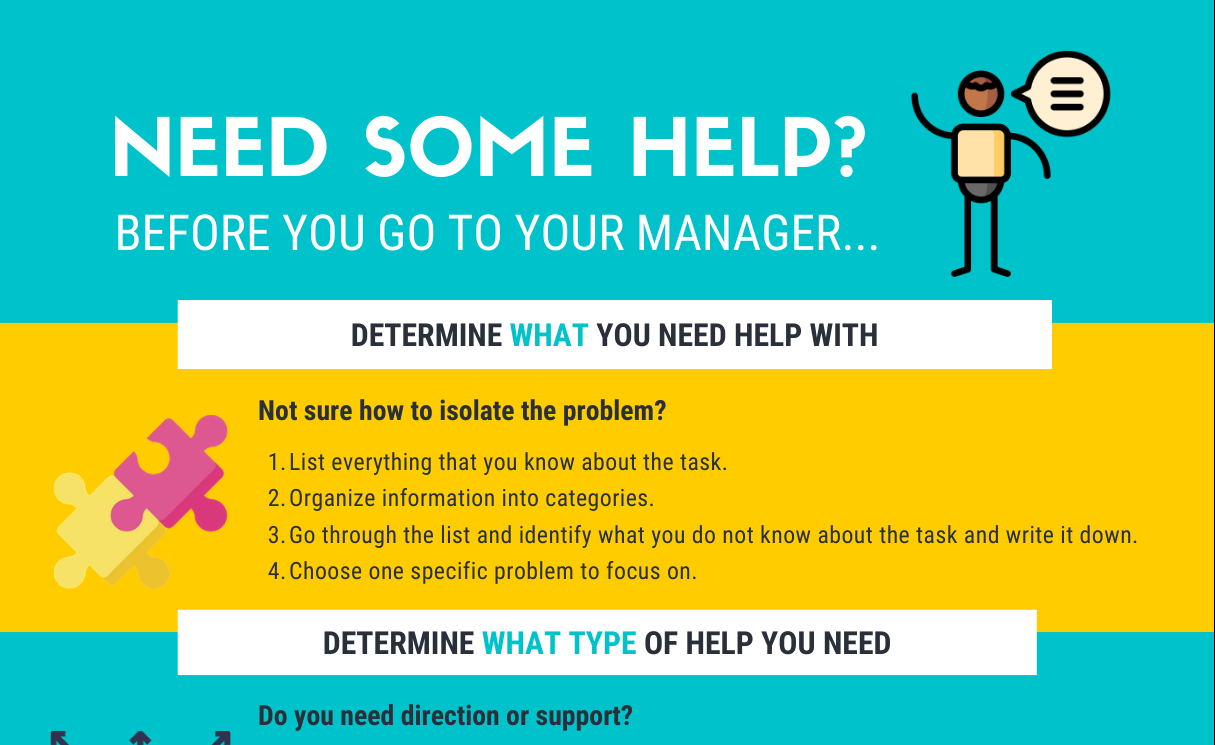Companies and new graduates often complain that higher education does not adequately prepare graduates with the soft skills needed to be successful in the workplace. This is especially true of communication as communication in academia looks, feels and sounds different than it does in the so-called “real world”.
My Learner
My learner for the global design sprint was a new graduate who used to be a former student employee of mine.
Name: Sania
Likes learning that is:
- Practical
- Easy to remember and implement
- Provides depth, not surface-level
- Adaptable to a variety of situations and managers
Dislikes:
- Surface level
- Too complicated
Step 1: Research
The first step in my process was to ask her about her experience transitioning into the workforce and the challenges she faced when she first entered. She described how one of the challenges she faced was knowing how and when to approach her manager when she needed help. As a new graduate, there was this fear that approaching her manager with a problem may suggest she wasn’t cut out for the job. There was a feeling of incompetence both in how she was feeling about not knowing how to resolve the problem but also a fear that her manager may think less of her if she approached them. She was looking for a process she could use to help decide when to approach her manager and how. I asked her to describe what had happened in the past when she approached her manager, what her thought processes were and where she felt stuck. I also reviewed articles that talked about how to approach your manager when you have a problem and reviewed my own experiences in the workplace.
Step 2: Ideate
I brainstormed a variety of different learning experiences, a training presentation, an exercise, a game but I landed on creating a job-aid. One of the challenges with training is that when you need the content at a later date, you don’t know where to find it and/or you can’t recall what you learned. So I decided to create a job-aid in the form of an infographic that a new graduate could print out, put above their desk and use whenever the situation arose. One of the things that were key in my idea is that it needed to be something that was easy to understand and adaptable based on what the new graduate needed.
Step 3: Prototype
I created 3 prototypes that presented the information in different ways: a flow chart and two different visual ways of organizing the information. None of the prototypes were fully complete so I could ask my learner about the content, usability and design.
Step 4: Testing
I met with my learner (over Zoom, of course!) and through screen sharing and sending her the prototypes, I asked her whether the content captured the challenges she faced, was easy to understand, review and scan. She gave me feedback on which prototype she preferred and we discussed wording and other things to change to the prototype to make it more clear. We discussed the balance between enough information and too much information to ensure that the job-aid was helpful but not overwhelming. After I completed the prototype, I sent it back for more feedback and made adjustments accordingly.
Now…for the final prototype that I’m submitting for the design sprint, see below! My hope is that this job-aid would be usable, adaptable and provide just-in-time support when needed.

By: Auroosa Kazmi-Ishaq

